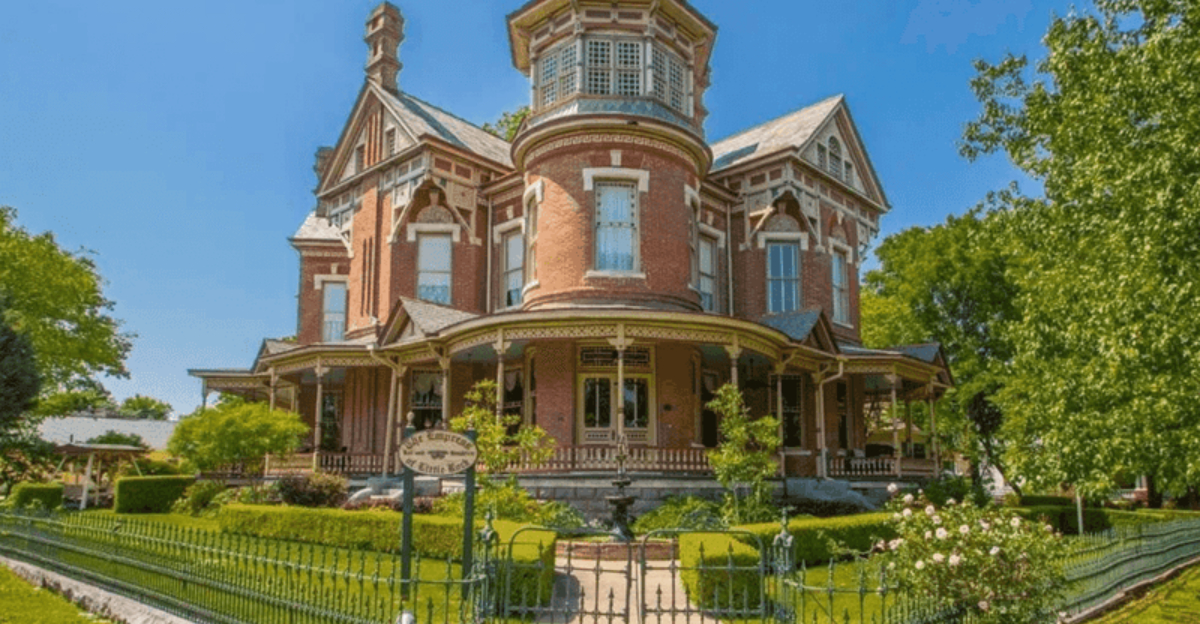Step through the doorway of time and into one of Little Rock’s most splendid Victorian treasures. This magnificent 1888 Queen Anne home stands as a testament to the craftsmanship and architectural flair of the Gilded Age.
With its asymmetrical façade, ornate woodwork, and rich historical character, this mansion offers a rare glimpse into Arkansas’ elegant past.
1. Grand Entrance That Whispers Stories

First impressions meant everything in 1888. The carved double doors swing open to reveal a foyer where countless guests once stood in awe.
Original hardwood gleams beneath your feet, having withstood generations of footsteps from dignitaries to delivery boys. Notice how the afternoon light filters through stained glass transoms, painting kaleidoscope patterns that shift with the Arkansas sun.
2. Spiral Staircase of Dramatic Dreams
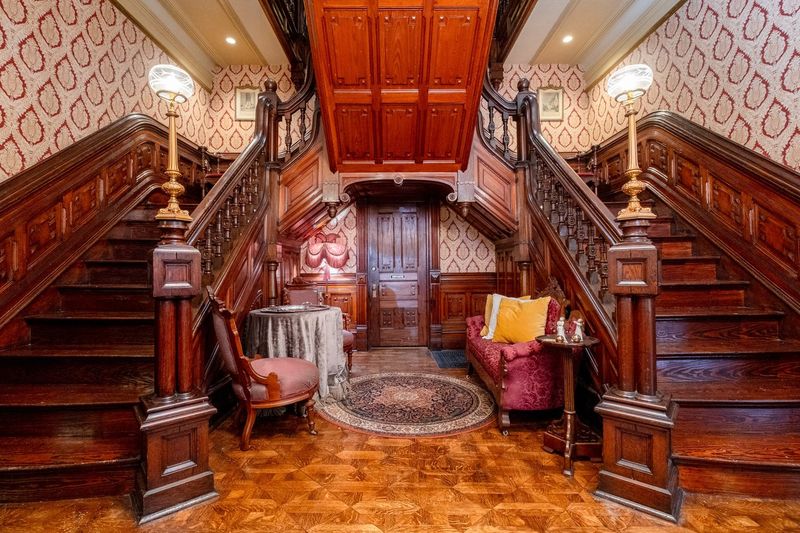
Ascending ambition carved into walnut and oak. The spiral staircase doesn’t merely connect floors—it tells the story of Victorian social climbing, both literal and figurative.
Hand-turned balusters march upward in rhythmic procession, each one slightly different from its neighbor. Imagine hoop skirts brushing against the banister, the soft rustle of taffeta announcing dinner guests making their grand descent.
3. Parlor Where Society Gathered

Gossip and political aspirations mingled here beneath 12-foot ceilings. The formal parlor, heart of Victorian social life, remains frozen in a moment when calling cards and proper introductions mattered above all.
Elaborate plasterwork crowns the walls, each rosette and garland hand-applied by craftsmen whose names history forgot. The bay window creates a stage where a grand piano once invited impromptu concerts on Sunday afternoons.
4. Dining Room for Gilded Age Feasts

Seven-course dinners once stretched into evening beneath the glow of gas-turned-electric chandeliers. The dining room walls wear their original wainscoting like family jewelry—never removed, only lovingly polished through decades.
Built-in china cabinets with leaded glass doors stand ready to display wedding crystal and inherited silver. Imagine servants moving silently through the swinging door, bringing oysters and champagne to tables where Arkansas fortunes were discussed.
5. Turret Room Watching Over Little Rock
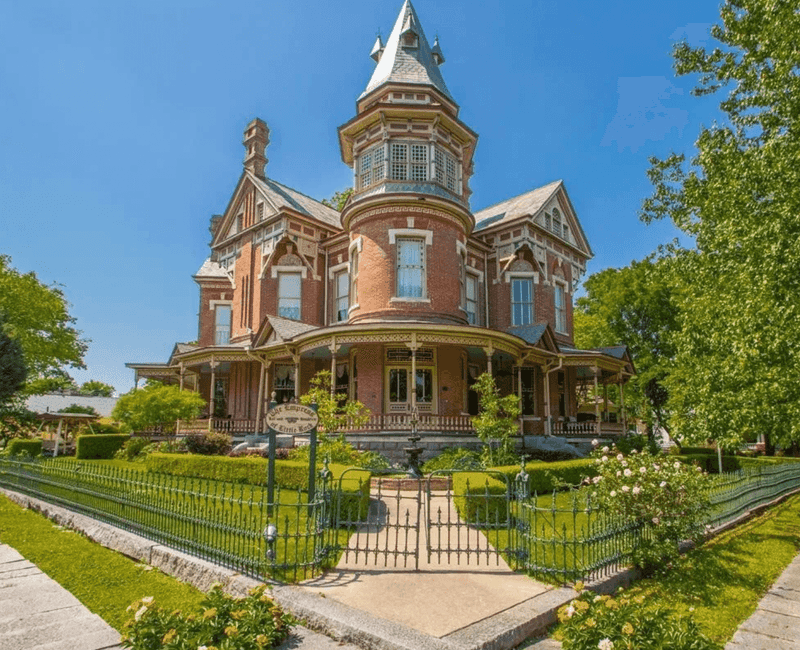
Rounded walls create architecture’s perfect retreat. The octagonal turret room rises like a crown jewel, offering views that have witnessed Little Rock transform from dusty frontier to modern capital.
Windows on five sides capture light from dawn until dusk. Curved glass, a luxury in 1888, bends the outdoors into dreamy distortions. This was perhaps where the lady of the house escaped to read Edith Wharton, watching carriages below while hidden from street-level eyes.
6. Kitchen Where Servants Orchestrated Elegance
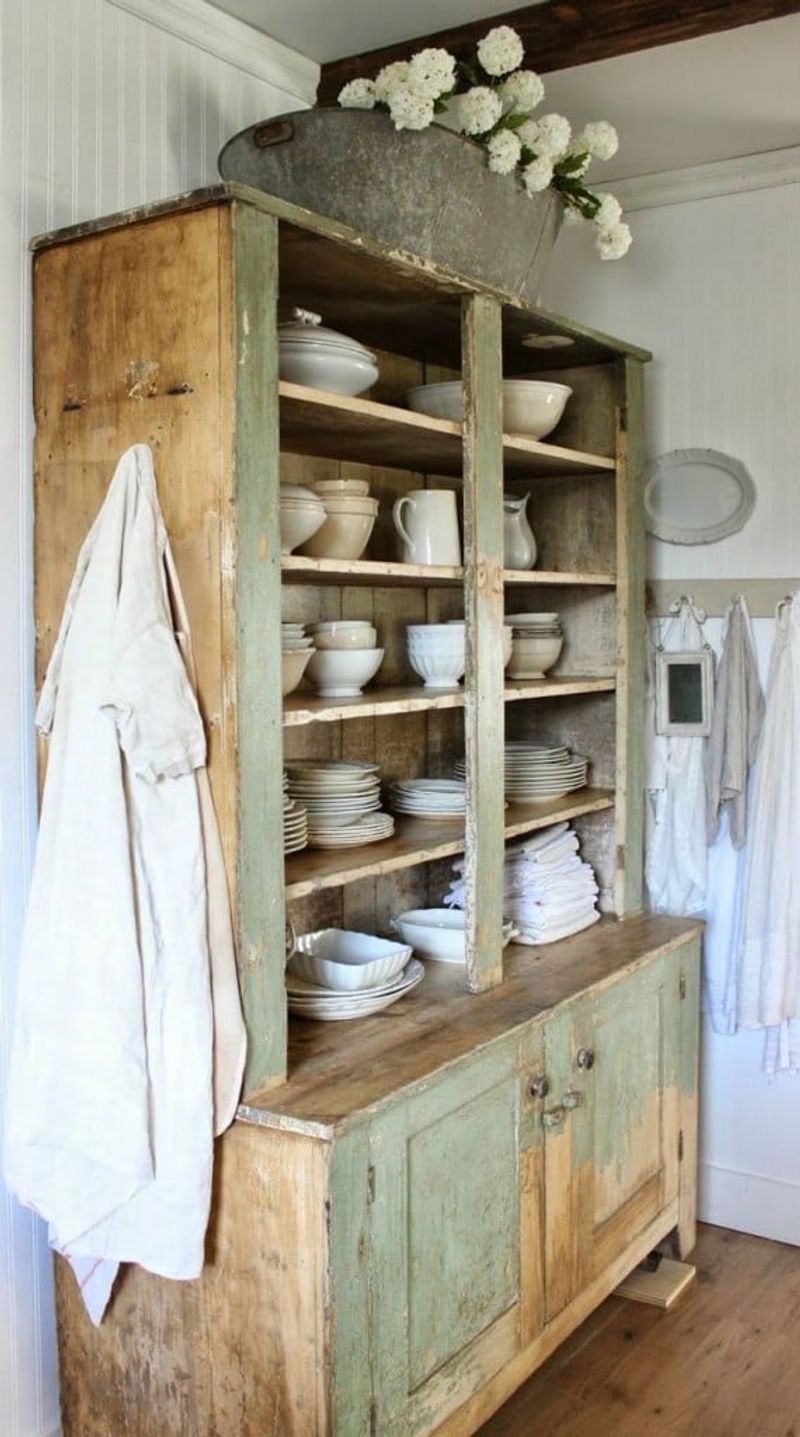
Behind society’s curtain lay the engine of Victorian hospitality. The kitchen, surprisingly spacious by 19th-century standards, reveals the invisible labor that powered upper-class leisure.
Cast iron stoves stand as monuments to coal-fired ingenuity. Original beadboard ceilings show water stains from that memorable flood of 1927. The butler’s pantry between kitchen and dining room created a buffer zone where plates were arranged and final touches applied before entering society’s gaze.
7. Master Bedroom’s Morning Light
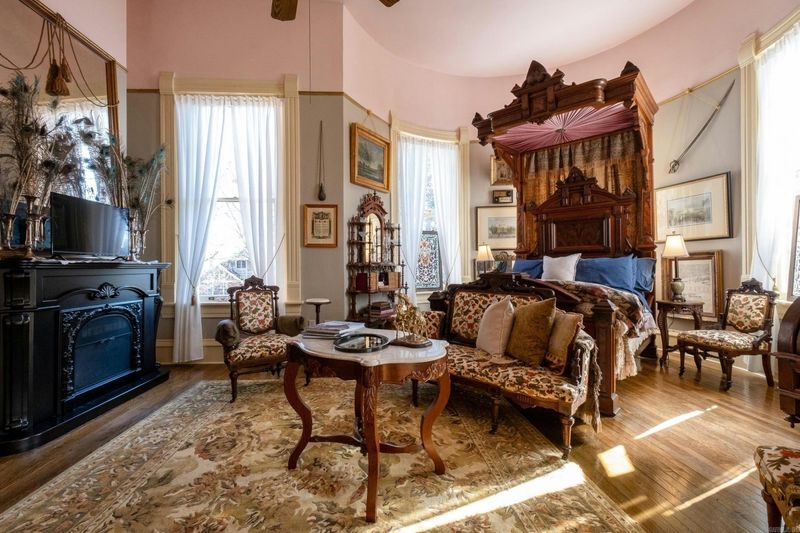
Sunrise filters through lace as it has for thirteen decades. The master chamber, larger than most modern living rooms, centers around a fireplace where winter mornings began with the crack of kindling.
Ceiling medallions frame chandeliers that once flickered with gaslight. The adjoining dressing room—novel for its time—features built-in wardrobes with brass hardware that still turns with buttery smoothness. Here, corsets were laced and cravats arranged before facing the day.
8. Stained Glass Symphony in Jewel Tones
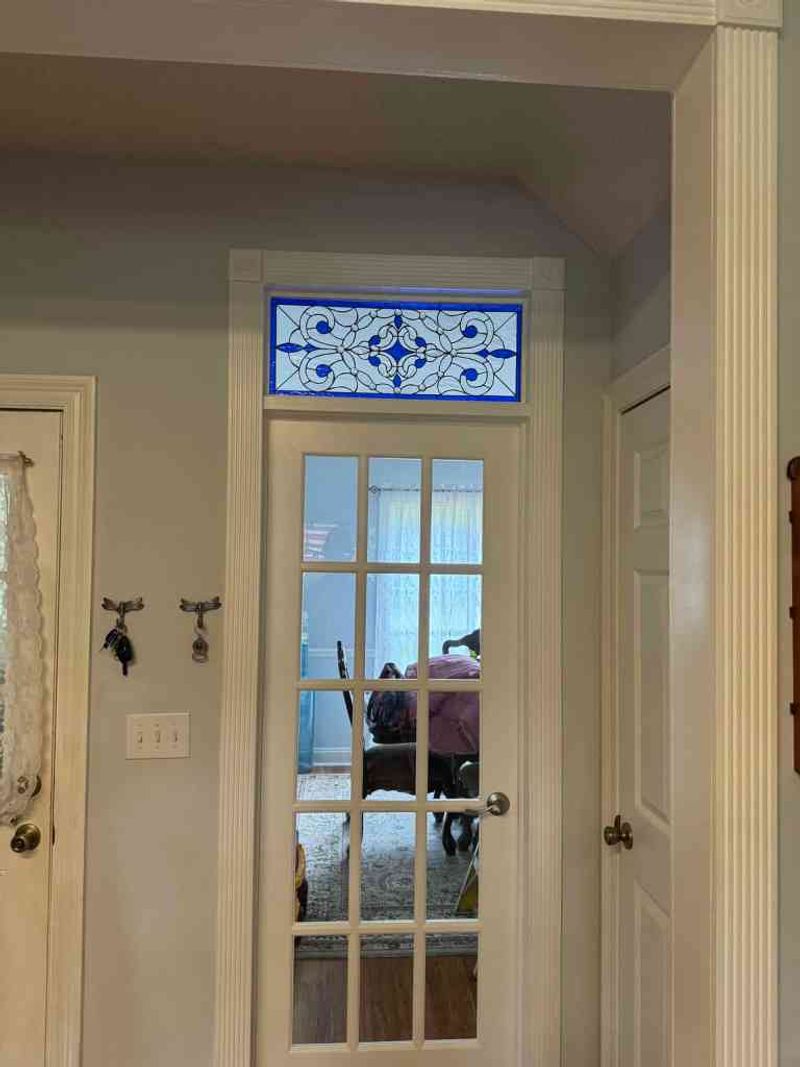
Gemstones transformed into windows frame everyday moments. Throughout the home, stained glass panels transform ordinary sunlight into sacred-feeling illumination, casting ruby and sapphire shadows across oak floors.
Each pane tells a story—flowers, geometric patterns, occasional birds in flight. Most remarkable is the landing window, where a peacock unfurls its glass tail in a hundred shades of blue and green. These windows weren’t just decoration but a display of wealth in an age when colored glass signified prosperity.
9. Children’s Quarters With Secret Passages
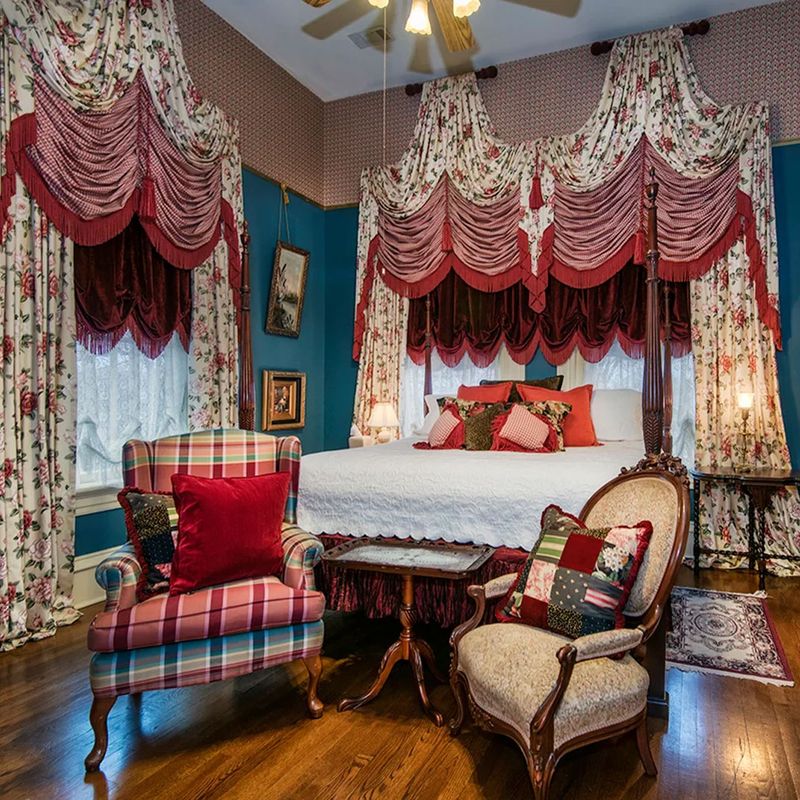
Laughter echoes through generations in these third-floor rooms. Victorian children may have been seen and not heard downstairs, but up here, imagination ruled their kingdom.
Sloped ceilings follow rooflines where rain still drums the same rhythms. The hidden door—disguised as a bookcase—leads to a narrow passage between walls. Small handprints from the 1890s remain preserved in the plaster, discovered during restoration as silent signatures from long-ago residents.
10. Wraparound Porch for Southern Evenings
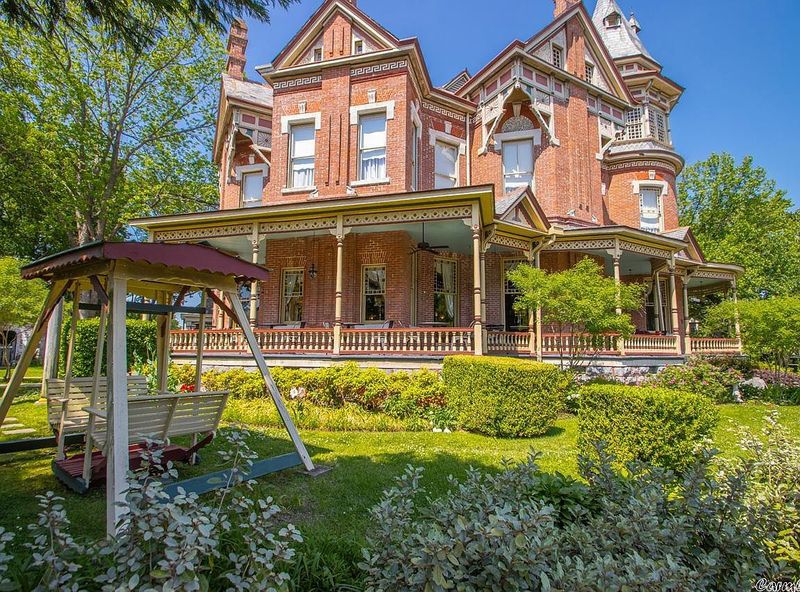
Summer heat surrenders to evening breezes on this outdoor sanctuary. The wraparound porch, spanning three sides of the home, represents Southern living at its most civilized—the boundary between nature and parlor.
Spindle work dangles like wooden lace from eaves. Ceiling painted haint blue wards off evil spirits according to tradition. The porch swing, though not original, hangs from the same hooks that have supported generations of courtships, political debates, and children’s rainy-day adventures.
11. Bathroom Where Modernity Met Tradition
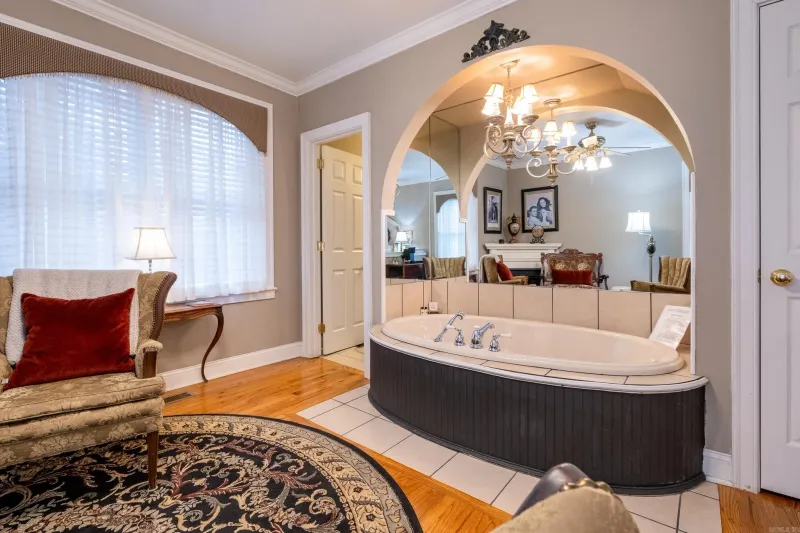
Running water signaled the height of 1880s innovation. This bathroom—installed during construction rather than added later—showcases the moment when Victorian homes embraced indoor plumbing as more than novelty.
The claw-foot tub dominates with porcelain majesty. Hexagonal floor tiles create patterns that draw the eye downward, each tiny piece hand-set. Marble-topped washstands support china basins hand-painted with forget-me-nots, merging practicality with artistry in the most private of spaces.
12. Library Where Knowledge Was Displayed
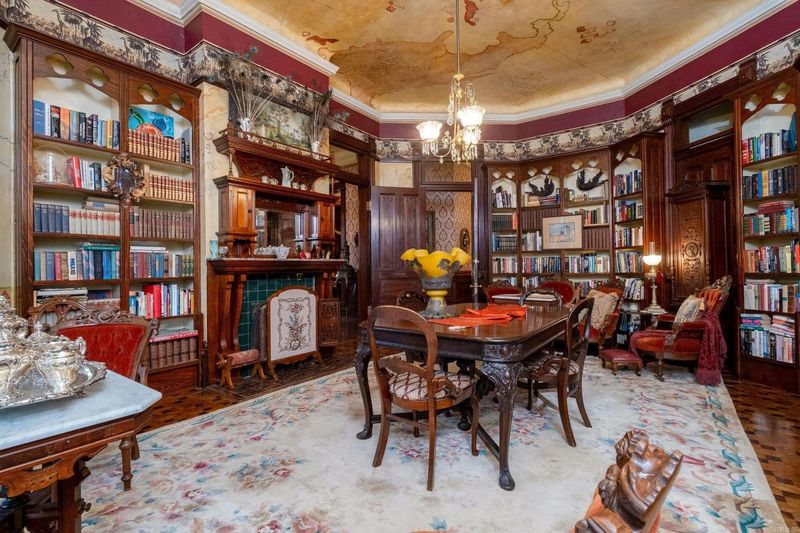
Leather-bound thoughts line walls in this sanctuary of intellectual display. The library speaks to an era when one’s book collection signified cultivation and worldliness.
Built-in shelves reach toward coffered ceilings, accessible by the rolling ladder that slides with surprising smoothness. The gentleman’s desk faces east—catching morning light for correspondence before business called downtown. Leather chairs have held their shape through decades, arms polished by hands seeking wisdom or perhaps just quiet escape.
13. Servant Staircase of Silent Movement
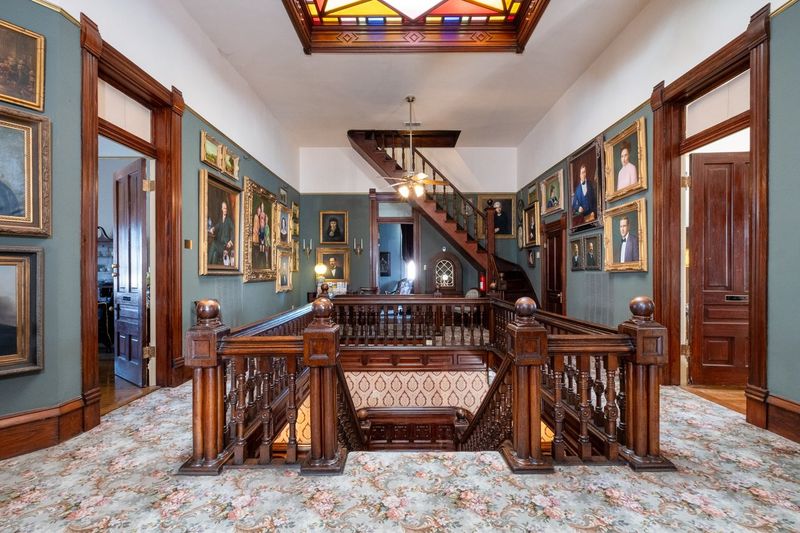
Narrow steps carried whispers between worlds. The back staircase—utilitarian, hidden, yet beautifully crafted—connected the servant quarters to every floor without disturbing the family’s daily rhythms.
No carpet softened footsteps here, only wood worn into subtle valleys. The walls bear pencil marks—heights of children measured by nursemaids, shopping lists, even what appears to be a secret courtship message. This stairway witnessed more authentic life than the grand front stairs ever did.
14. Attic Workshop of Forgotten Hobbies
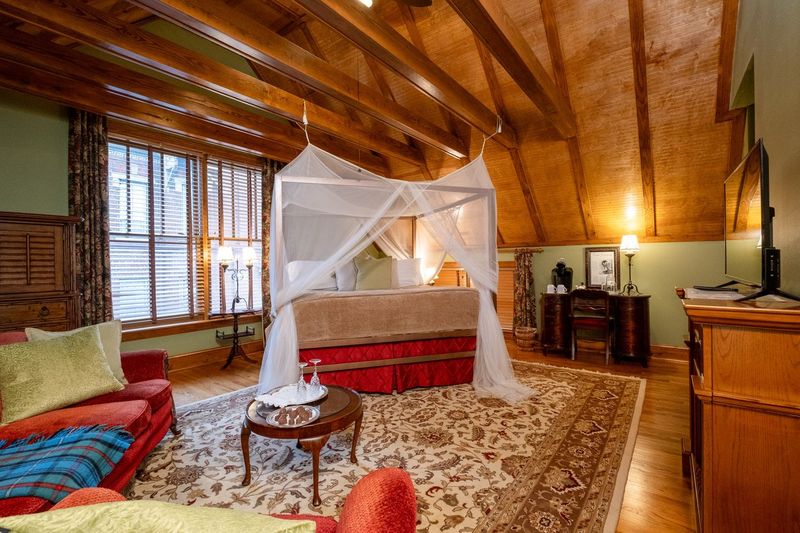
Dormer windows frame skies unchanged since Chester Arthur was president. The attic space, surprisingly finished for its era, reveals the pastimes that occupied long Arkansas winters before electronic entertainment.
A treadle sewing machine waits by the north window where light was best for detailed work. Amateur carpentry tools hang in careful arrangement—perhaps the master’s hobby away from business pressures. Steamer trunks still contain Christmas decorations from the 1920s, tissue paper crumbling around glass ornaments imported from Germany.
15. Hallways That Whisper History
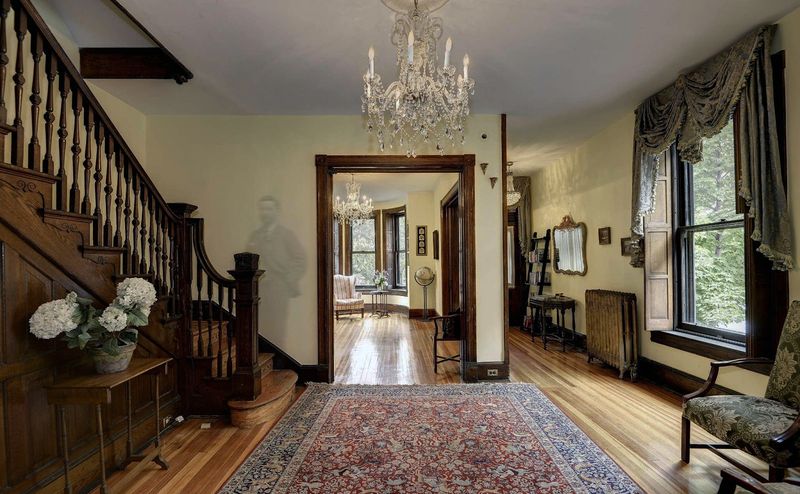
Even the transitions in this house tell stories. Narrow, polished, and softly creaking—where footsteps carry more than sound.
Each step is a thread in the home’s memory quilt. Even silence echoes with elegance.

